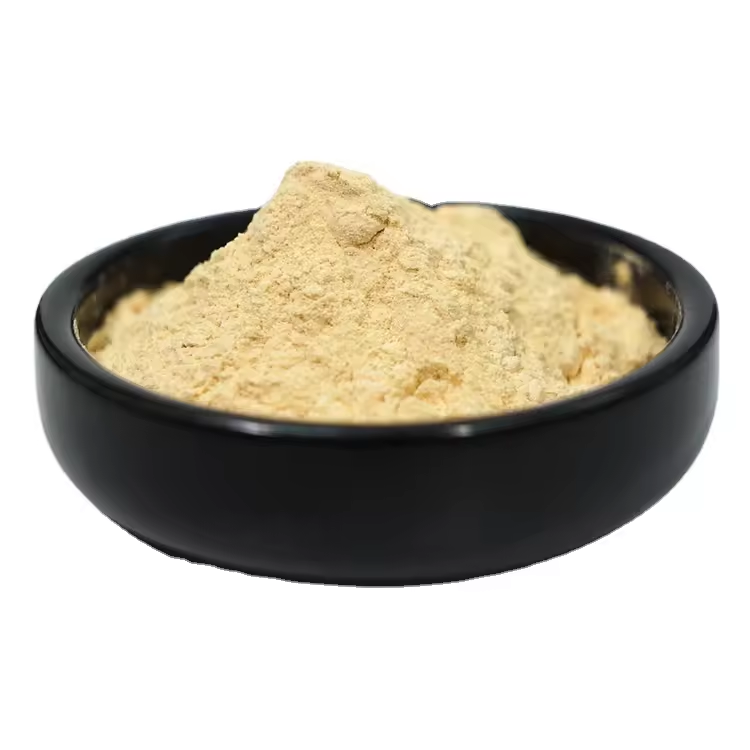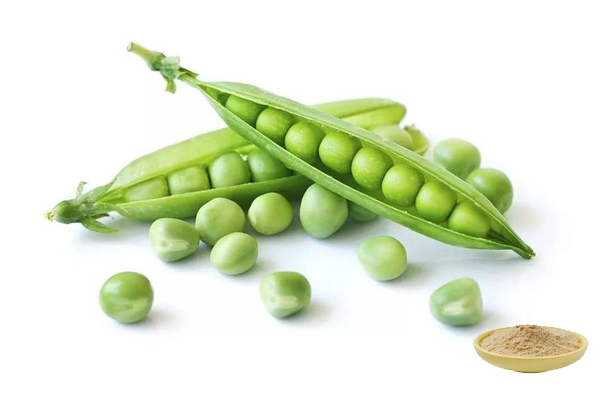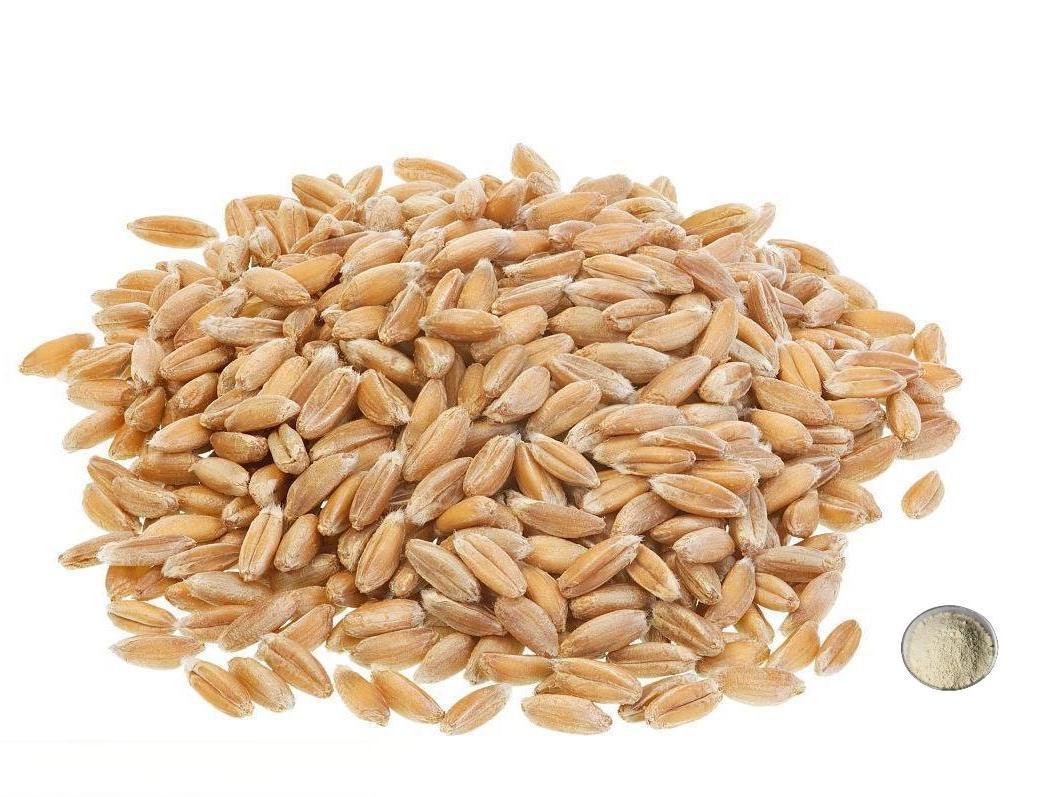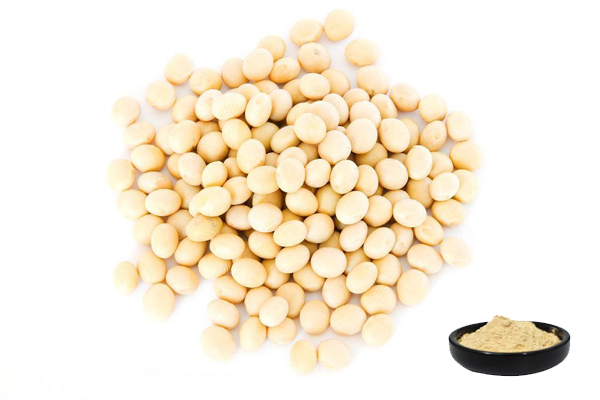Protéine de soja en poudre 60%
Source: soja
Ingrédients actifs: protéines de soja
Analyse :60%
Méthode d’essai :Kjeldahl détermination
Apparence: poudre Fine jaune clair
Résidu de Pesticide: conforme à la norme (ce) No 396/2005
- Description Description
- Fiche technique
- Certificat de formation
-
Qu’est-ce que la poudre de protéine de soja?
Protéine de soja is a kind of plant protein, its amino acid composition is similar to milk protein, except methionine is slightly lower, and the rest of the essential amino acid content is richer, is a plant-based complete protein. The amino acid composition of soy protein is similar to that of essential amino acids, and it is also rich in calcium, phosphorus, iron, oligosaccharides, and various vitamins. It is also rich in branched-chain amino acids (BCAA), which play an important role in muscle synthesis.
vert Spring Technology fournit la poudre de protéine de soja 60%, qui est faite à partir de soja non-ogm, sans cholestérol et sans lactose, et a été largement utilisé dans l’industrie alimentaire ainsi que d’autres industries.
Fondée en 2000, Green Spring Technology s’engage à fournir à ses clients des extraits de plantes naturels, sûrs et biologiques. Nous appliquons strictement un système de gestion de la qualité et organisons la production selon oin, HACCP, et d’autres normes de qualité. Nos produits sont fabriqués selon les normes internationales les plus élevées, y compris EC396, 2023/915, et les normes les plus élevées de résidus de solvants. Green Spring a obtenu des certifications Halal, casher, COSMOS, BRC, IFS, FDA, ISO et bien d’autres. Les rapports des essais faisant autorité de tiers sont disponibles.
Spécification:
Nom du produit
Protéine de soja en poudre
Nom Latin
Glycine max (L.) Merr.
Source:
Le soja
Ingrédients actifs
Le soja protéines
spécification
60%
Méthode d’essai
Détermination de Kjeldahl
apparence
Poudre jaune clair
Résidus de pesticides
Conforme à la norme (ce) n ° 396/2005
Règlement:
Il est conforme à la réglementation de l’ue.
Vous cherchez un devis?Benefits:
Gelability
Gelling ability is one of the most important attributes of soy protein, which gives it high viscosity, plasticity, and elasticity, and it can be used as a carrier for water as well as for flavor additives, sugar, and other compounds in product applications, which is extremely beneficial for food processing. There are many ways to form gels, such as heat induction, the addition of salt, the addition of enzymes, etc., all of which can make the protein form gels. Gelation is affected by a variety of factors, such as subunit composition, surface hydrophobicity size, sulfhydryl content, etc. In addition to this, the concentration of protein amount, heating temperature, pH, ionic strength, etc. is also an important element that affects the role of gelation.
Emulsifying Properties
Soya protein molecules have the characteristic structure of emulsifiers, i.e. amphoteric structure, containing both hydrophilic and lipophilic groups in the molecule. In an oil-water mixture, the hydrophilic polypeptide part of the soy protein molecule spreads towards the lipid phase and the polar part towards the water phase. When soy protein is used in food processing, it aggregates at the oil-water interface. It reduces its surface tension and promotes the formation of oil-water emulsions.
Water Absorption and Water Holding
Soy protein molecules contain many polar groups, in contact with water molecules, hydration occurs and shows the ability to absorb and hold water, which can improve the taste of food, but also to maintain the wetness of food, and improve food quality. Soy protein in the product of bread, pastry, and meat products, can improve product quality and taste.
Maintaining Bone Health
Soya protein is rich in calcium and vitamin D and is essential for bone health. Moderate intaking of soya protein can help prevent osteoporosis and fractures and promote bone growth and repair.
Lowering Cholesterol
The plant fiber and isoflavones in soy protein help lower cholesterol levels. Moderate intaking of soy protein reduces the level of low-density lipoprotein cholesterol (LDL-C) while increasing the level of high-density lipoprotein cholesterol (HDL-C), thus reducing the risk of cardiovascular disease.
Improves Blood Sugar Control
The fiber and isoflavones in soya protein enhance insulin sensitivity and help control blood sugar levels.
Provides Antioxidants
The isoflavones in soy protein have strong antioxidant properties that can help scavenge free radicals and reduce the damage caused by oxidative stress. Moderate intake of soy protein can provide antioxidant protection and help prevent the onset of chronic diseases.
Applications:
In the Food Field:
Soya protein powder is widely used in a variety of foods, such as fruit juices, cheese, bread, and food bars. Soya protein is effective in reducing high cholesterol in people with high cholesterol. Soy protein drinks in the arginine content than milk, and their arginine and lysine ratio is also more reasonable; the lipids and linoleic acid are extremely rich and do not contain cholesterol, which can prevent cardiovascular disease in adulthood. Rich lecithin can remove excess sterols in the blood, ‘vascular scavenger’ reputation. Soya protein drinks are easier to digest and absorb than milk. Milk in the stomach is easy to form large and hard lumps, while soy milk in the stomach is formed into small slices, and is fluffy, not hard, which can make it easier to digest and absorb.
-
Télécharger le document
Poudre de protéine de soja 60% COA
-
Télécharger le document
Cosmos 2023
Télécharger le documentHalal 2023
Télécharger le documentCasher 2023


 Anglais
Anglais français
français espagnol
espagnol russe
russe coréen
coréen japonais
japonais













